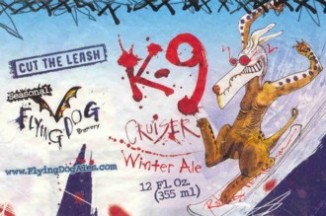 IN A TRADITION nearly as old as craft beer itself, Anchor Brewing has released a Christmas Ale every year since 1975. That’s almost long enough to see two full generations of craft drinkers born and raised to legal age. Throughout the decades the brewery has enlisted the same artist, Jim Stitt, to sketch a new tree for its label, distinguishing each vintage from the next and enhancing its collector’s appeal. While Anchor’s beer may not have inspired the same kitschy fanaticism that surrounds Great Lakes’ own Christmas Ale, its perennial appearance, robust recipe(s), and air of ritual have inspired craft drinkers to keep, cellar, and sample it each year. The inevitable if unintentional result: one of the world’s most epic vertical beer tastings possible.
IN A TRADITION nearly as old as craft beer itself, Anchor Brewing has released a Christmas Ale every year since 1975. That’s almost long enough to see two full generations of craft drinkers born and raised to legal age. Throughout the decades the brewery has enlisted the same artist, Jim Stitt, to sketch a new tree for its label, distinguishing each vintage from the next and enhancing its collector’s appeal. While Anchor’s beer may not have inspired the same kitschy fanaticism that surrounds Great Lakes’ own Christmas Ale, its perennial appearance, robust recipe(s), and air of ritual have inspired craft drinkers to keep, cellar, and sample it each year. The inevitable if unintentional result: one of the world’s most epic vertical beer tastings possible.
Though the recipes differ in the details from year to year (Anchor classifies the hops and malts as “TOP SECRET”), enough characteristics are consistent to recognize each beer as a branch from the same family…tree. The basis is a hearty winter warmer, its color invariably a rich brown (half molasses, half tree sap), foam slightly yellowed like a cheesecake crust, and ABV probably between 5 and 6.25%. Molasses figures heavily into the recipe along with allspice and cinnamon, nutmeg or ginger perhaps less so, with the base malts contributing considerable fruitiness and a solid body. Hops start out piney but modest and decline smoothly over time, while carbonation sits usually around medium and fluctuates depending on the vintage and how well it was stored. The fundamental recipe is pleasant but frankly no great amazement—at first. As with many holiday habits, the initial fun with Anchor’s Christmas Ale is in the sharing and tradition. Our appreciation for both grows in time, and Anchor’s ale rewards us.
Arranged below are notes from a single tasting with samples dating back intermittently to 1993. All bottles are 12 oz and pulled from the same cellar, though not all were necessarily housed there since initial release. Fairly consistent themes of appearance and flavors run throughout the entire collection, so only differentiating factors are noted for each vintage.
 2013
2013
Aroma thick with brown sugar, some earthier molasses, and allspice. A little carbonated diffusion making the body seem off-medium, with a tangy finish and moderate hops. All the elements are here but have not yet steeped long enough to blend smoothly.
Rating: 85
—
 2012
2012
“A vanilla bomb,” someone noted, and indeed an almost spirituous extract is strong in the aroma, but less so in the flavor. Altogether smoother, showing initial notes of sherry, a bit of leather, and a smaller carbonation burst. On its way.
Rating: 87
—
 2009
2009
Surprising aroma of pine at first—perhaps a more well-hopped vintage than many others—but then returning much more to sweetness once the temperature rises and aromatics branch out. Raisin is most prominent as well as the ongoing thread of molasses, still quite strong here though nearly more smoky than sharp. Somewhat buttery on the palate. Still some carbonation in the body but by now largely diminished in finish.
Rating: 86
—
 2008
2008
Molasses and thicker malts return to the fore along with leather, vanilla, and caramel. This is the closest yet to a Scotch ale, smoother in body, slick and a little sticky at the finish but without any of the butteriness of 2009. Slightly flattening on the palate from fairly soft water.
Rating: 88
—
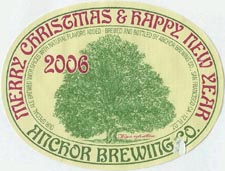 2006
2006
A concerning small burst of popcorn in the aroma but thankfully very little in the flavor. More straightforward malts, less fruit overall, a little alcohol and phenol later on. Hops completely gone by now and spices fully sublimated into the body. Some oxidation apparent in finish and a little diacetyl.
Rating: 86
—
 2005
2005
Generous with the dark fruits: raisins, cherry, perhaps plum, with extra dark molasses in the finish instead of the front. Malts more like brown bread than grain. Metallic quality developing in these earlier vintages and becoming more pronounced as the carbonation disappears. Becoming flat, but still quite flavorful.
Rating: 87
—
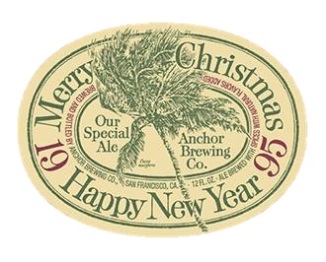 1995
1995
Pure molasses in aroma and flavor. Mildly carbonated with a surprising (albeit small) dose of crispness towards the finish implying some latent carbonation with a souciant of alkalinity. Highly satisfying as a sipper despite its simplistic profile.
Rating: 91
—
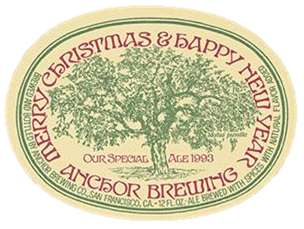 1993
1993
Almost less of a beer by now and turned more towards the grapey tang of sherry, with lingering molasses contributing some warming and leathery qualities of port. Acetic thinning has left the finish slightly sour, though, and with vinegar encroaching it seems Christmas Ale is on its final descent.
Rating: 87
—
 1993 & 1995 Blend
1993 & 1995 Blend
Combining the two oldest and most distinctive vintages makes for a slightly contentious yet intriguing blend. It’s also the first to actually express dynamism on the palate. The 95’s molasses wins the aroma and initial flavor before the slower but sharper flavors of 93 attenuate the finish, leaves it hinting nearly at Flemish red. Otherwise “Like a low-gravity Utopias,” as one taster put it.
Rating: 90
 JUST AS ANCHOR has Christmas Ale and its perennially renewed label, Deschutes has Jubelale. As the brewery’s original winter seasonal first brewed in 1988, Jubelale has a 25-year-old history and nearly as many labels to show for it. 2013’s, drawn by local artist Avlis Leumas, is surely one of the most enticing. Nor is the beer half bad, either.
JUST AS ANCHOR has Christmas Ale and its perennially renewed label, Deschutes has Jubelale. As the brewery’s original winter seasonal first brewed in 1988, Jubelale has a 25-year-old history and nearly as many labels to show for it. 2013’s, drawn by local artist Avlis Leumas, is surely one of the most enticing. Nor is the beer half bad, either.
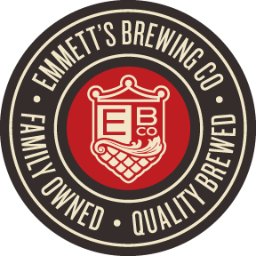
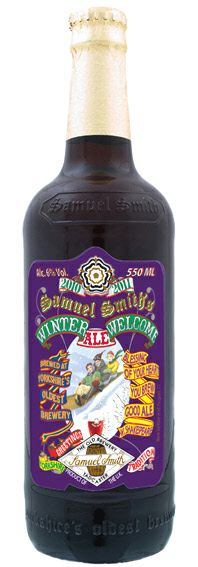


 IN A TRADITION nearly as old as craft beer itself, Anchor Brewing has released a Christmas Ale every year since 1975. That’s almost long enough to see two full generations of craft drinkers born and raised to legal age. Throughout the decades the brewery has enlisted the same artist,
IN A TRADITION nearly as old as craft beer itself, Anchor Brewing has released a Christmas Ale every year since 1975. That’s almost long enough to see two full generations of craft drinkers born and raised to legal age. Throughout the decades the brewery has enlisted the same artist, 









 So what are we really left with? An intriguing experiment with limited appeal. Between Belgium’s lax attitude towards style guidelines and America’s impudence in breaking them, there’s no reason but for marketing buzzwords that 5 Rabbit should strain to categorize this beer. It’s especially counterproductive when those chosen styles conjure up such strong associations that Huitzi simply does not equal. Though unique and deeply complex, it is too sweet and stolid on the palate, lacking the spice, stronger attenuation, or bitterness to give it a truly refreshing balance. Its lower carbonation, too, leaves it almost more akin to a sparkling melomel mead. Altogether it’s a little confusing. While experimentation can be a wonderful and illuminating thing, executing the fundamentals must come first; if 5 Rabbits put aside their mythic cookbooks and focused on excellent base brews, their exotic embellishments would be much easier to swallow.
So what are we really left with? An intriguing experiment with limited appeal. Between Belgium’s lax attitude towards style guidelines and America’s impudence in breaking them, there’s no reason but for marketing buzzwords that 5 Rabbit should strain to categorize this beer. It’s especially counterproductive when those chosen styles conjure up such strong associations that Huitzi simply does not equal. Though unique and deeply complex, it is too sweet and stolid on the palate, lacking the spice, stronger attenuation, or bitterness to give it a truly refreshing balance. Its lower carbonation, too, leaves it almost more akin to a sparkling melomel mead. Altogether it’s a little confusing. While experimentation can be a wonderful and illuminating thing, executing the fundamentals must come first; if 5 Rabbits put aside their mythic cookbooks and focused on excellent base brews, their exotic embellishments would be much easier to swallow.
